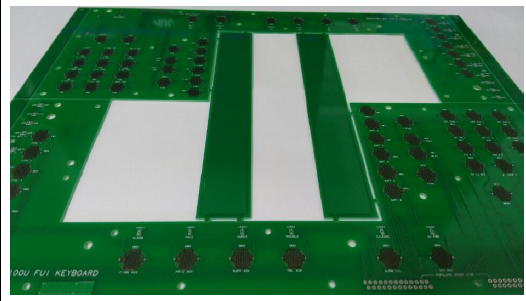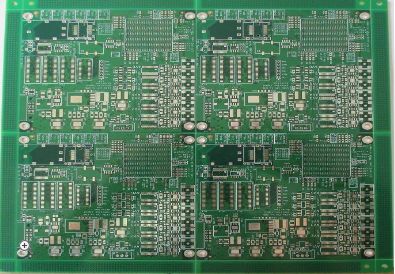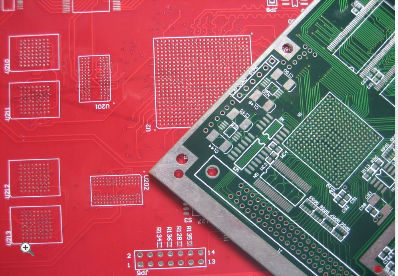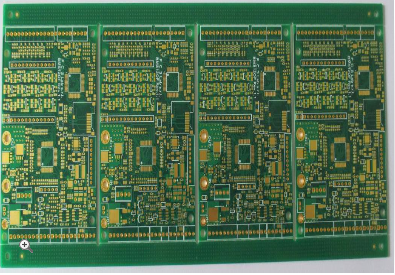-
 Agriculture
Agriculture
-
 Health-Care
Health-Care
-
 Environment
Environment
-
 Construction-Real-Estate
Construction-Real-Estate
-
 Tools-Hardware
Tools-Hardware
-
 Home-Garden
Home-Garden
-
 Furniture
Furniture
-
 Luggage-Bags-Cases
Luggage-Bags-Cases
-
 Medical-devices-Supplies
Medical-devices-Supplies
-
 Gifts-Crafts
Gifts-Crafts
-
 Sports-Entertainment
Sports-Entertainment
-
 Food-Beverage
Food-Beverage
-
 Vehicles-Transportation
Vehicles-Transportation
-
 Power-Transmission
Power-Transmission
-
 Material-Handling
Material-Handling
-
 Renewable-Energy
Renewable-Energy
-
 Safety
Safety
-
 Testing-Instrument-Equipment
Testing-Instrument-Equipment
-
 Construction-Building-Machinery
Construction-Building-Machinery
-
 Pet-Supplies
Pet-Supplies
-
 Personal-Care-Household-Cleaning
Personal-Care-Household-Cleaning
-
 Vehicle-Accessories-Electronics-Tools
Vehicle-Accessories-Electronics-Tools
-
 School-Office-Supplies
School-Office-Supplies
-
 Packaging-Printing
Packaging-Printing
-
 Mother-Kids-Toys
Mother-Kids-Toys
-
 Business-Services
Business-Services
-
 Commercial-Equipment-Machinery
Commercial-Equipment-Machinery
-
 Apparel-Accessories
Apparel-Accessories
-
 Security
Security
-
 Shoes-Accessories
Shoes-Accessories
-
 Vehicle-Parts-Accessories
Vehicle-Parts-Accessories
-
 Jewelry-Eyewear-Watches-Accessories
Jewelry-Eyewear-Watches-Accessories
-
 Lights-Lighting
Lights-Lighting
-
 Fabric-Textile-Raw-Material
Fabric-Textile-Raw-Material
-
 Fabrication-Services
Fabrication-Services
-
 Industrial-Machinery
Industrial-Machinery
-
 Consumer-Electronics
Consumer-Electronics
-
 Electrical-Equipment-Supplies
Electrical-Equipment-Supplies
-
 Electronic-Components-Accessories-Telecommunications
Electronic-Components-Accessories-Telecommunications
-
 Home-Appliances
Home-Appliances
-
 Beauty
Beauty
-
 Chemicals
Chemicals
-
 Rubber-Plastics
Rubber-Plastics
-
 Metals-Alloys
Metals-Alloys
- Masonry Materials
- Curtain Walls & Accessories
- Earthwork Products
- Fireproofing Materials
- Heat Insulation Materials
- Plastic Building Materials
- Building Boards
- Soundproofing Materials
- Timber
- Waterproofing Materials
- Balustrades & Handrails
- Bathroom & Kitchen
- Flooring & Accessories
- Tiles & Accessories
- Door, Window & Accessories
- Fireplaces & Stoves
- Floor Heating Systems & Parts
- Stairs & Stair Parts
- Ceilings
- Elevators & Escalators
- Stone
- Countertops, Vanity Tops & Table Tops
- Mosaics
- Metal Building Materials
- Multifunctional Materials
- Ladders & Scaffoldings
- Mouldings
- Corner Guards
- Decorative Films
- Formwork
- Building & Industrial Glass
- Other Construction & Real Estate
- Wallpapers/Wall panels
- HVAC System & Parts
- Outdoor Facilities
- Prefabricated Buildings
- Festive & Party Supplies
- Bathroom Products
- Household Sundries
- Rain Gear
- Garden Supplies
- Household Cleaning Tools & Accessories
- Lighters & Smoking Accessories
- Home Storage & Organization
- Household Scales
- Smart Home Improvement
- Home Textiles
- Kitchenware
- Drinkware & Accessories
- Dinnerware, Coffee & Wine
- Home Decor
- Golf
- Fitness & Body Building
- Amusement Park Facilities
- Billiards, Board Game,Coin Operated Games
- Musical Instruments
- Outdoor Affordable Luxury Sports
- Camping & Hiking
- Fishing
- Sports Safety&Rehabilitation
- Ball Sports Equipments
- Water Sports
- Winter Sports
- Luxury Travel Equipments
- Sports Shoes, Bags & Accessories
- Cycling
- Other Sports & Entertainment Products
- Artificial Grass&Sports Flooring&Sports Court Equipment
- Scooters
- Food Ingredients
- Honey & Honey Products
- Snacks
- Nuts & Kernels
- Seafood
- Plant & Animal Oil
- Beverages
- Fruit & Vegetable Products
- Frog & Escargot
- Bean Products
- Egg Products
- Dairy Products
- Seasonings & Condiments
- Canned Food
- Instant Food
- Baked Goods
- Other Food & Beverage
- Meat & Poultry
- Confectionery
- Grain Products
- Feminie Care
- Hair Care & Styling
- Body Care
- Hands & Feet Care
- Hygiene Products
- Men's Grooming
- Laundry Cleaning Supplies
- Travel Size & Gift Sets
- Room Deodorizers
- Other Personal Care Products
- Pest Control Products
- Special Household Cleaning
- Floor Cleaning
- Kitchen & Bathroom Cleaning
- Oral Care
- Bath Supplies
- Yellow Pages
- Correction Supplies
- Office Binding Supplies
- Office Cutting Supplies
- Board Erasers
- Office Adhesives & Tapes
- Education Supplies
- Pencil Cases & Bags
- Notebooks & Writing Pads
- File Folder Accessories
- Calendars
- Writing Accessories
- Commercial Office Supplies
- Pencil Sharpeners
- Pens
- Letter Pad/Paper
- Paper Envelopes
- Desk Organizers
- Pencils
- Markers & Highlighters
- Filing Products
- Art Supplies
- Easels
- Badge Holder & Accessories
- Office Paper
- Printer Supplies
- Book Covers
- Other Office & School Supplies
- Stationery Set
- Boards
- Clipboards
- Stamps
- Drafting Supplies
- Stencils
- Electronic Dictionary
- Books
- Map
- Magazines
- Calculators
- Baby & Toddler Toys
- Educational Toys
- Classic Toys
- Dress Up & Pretend Play
- Toy Vehicle
- Stuffed Animals & Plush Toys
- Outdoor Toys & Structures
- Balloons & Accessories
- Baby Food
- Children's Clothing
- Baby Supplies & Products
- Maternity Clothes
- Kids Shoes
- Baby Care
- Novelty & Gag Toys
- Dolls & Accessories
- Puzzle & Games
- Blocks & Model Building Toys
- Toddler Clothing
- Baby Clothing
- Kids' Luggage & Bags
- Arts, Crafts & DIY Toys
- Action & Toy Figures
- Baby Appliances
- Hobbies & Models
- Remote Control Toys
- Promotional Toys
- Pregnancy & Maternity
- Hygiene Products
- Kid's Textile&Bedding
- Novelty & Special Use
- Toy Weapons
- Baby Gifts
- Baby Storage & Organization
- Auto Drive Systems
- ATV/UTV Parts & Accessories
- Marine Parts & Accessories
- Other Auto Parts
- Trailer Parts & Accessories
- Auto Transmission Systems
- Train Parts & Accessories
- Universal Parts
- Railway Parts & Accessories
- Auto Brake Systems
- Aviation Parts & Accessories
- Truck Parts & Accessories
- Auto Suspension Systems
- Auto Lighting Systems
- New Energy Vehicle Parts & Accessories
- Auto Steering Systems
- Wheels, Tires & Accessories
- Bus Parts & Accessories
- Auto Performance Parts
- Cooling System
- Go-Kart & Kart Racer Parts & Accessories
- Air Conditioning Systems
- Heavy Duty Vehicle Parts & Accessories
- Auto Electrical Systems
- Auto Body Systems
- Auto Engine Systems
- Container Parts & Accessories
- Motorcycle Parts & Accessories
- Refrigeration & Heat Exchange Equipment
- Machine Tool Equipment
- Food & Beverage Machinery
- Agricultural Machinery & Equipment
- Apparel & Textile Machinery
- Chemical Machinery
- Packaging Machines
- Paper Production Machinery
- Plastic & Rubber Processing Machinery
- Industrial Robots
- Electronic Products Machinery
- Metal & Metallurgy Machinery
- Woodworking Machinery
- Home Product Manufacturing Machinery
- Machinery Accessories
- Environmental Machinery
- Machinery Service
- Electrical Equipment Manufacturing Machinery
- Industrial Compressors & Parts
- Tobacco & Cigarette Machinery
- Production Line
- Used Industrial Machinery
- Electronics Production Machinery
- Other Machinery & Industrial Equipment
- Camera, Photo & Accessories
- Portable Audio, Video & Accessories
- Television, Home Audio, Video & Accessories
- Video Games & Accessories
- Mobile Phone & Accessories
- Electronic Publications
- Earphone & Headphone & Accessories
- Speakers & Accessories
- Smart Electronics
- TV Receivers & Accessories
- Mobile Phone & Computer Repair Parts
- Chargers, Batteries & Power Supplies
- Used Electronics
- VR, AR, MR Hardware & Software
- Projectors & Presentation Equipments
- Other Consumer Electronics
- Cables & Commonly Used Accessories
- Computer Hardware & Software
- Displays, Signage and Optoelectronics
- Discrete Semiconductors
- Wireless & IoT Module and Products
- Telecommunications
- Connectors, Terminals & Accessories
- Development Boards, Electronic Modules and Kits
- Circuit Protection
- Sensors
- Isolators
- Audio Components and Products
- Integrated Circuits
- Power Supplies
- Relays
- RF, Microwave and RFID
- Electronic Accessories & Supplies
- Passive Components
- PCB & PCBA
- Air Quality Appliances
- Home Appliance Parts
- Heating & Cooling Appliances
- Small Kitchen Appliances
- Laundry Appliances
- Water Heaters
- Water Treatment Appliances
- Refrigerators & Freezers
- Personal Care & Beauty Appliances
- Major Kitchen Appliances
- Cleaning Appliances
- Second-hand Appliances
- Smart Home Appliances
- Other Home Appliances
- Energy Chemicals
- Inorganic Chemicals
- Basic Organic Chemicals
- Agrochemicals
- Admixture & Additives
- Catalysts & Chemical Auxiliary Agents
- Pigments & Dyestuff
- Coating & Paint
- Daily Chemicals
- Polymer
- Organic Intermediate
- Adhesives & Sealants
- Chemical Waste
- Biological Chemical Products
- Surface Treatment Chemicals
- Painting & Coating
- Chemical Reagents
- Flavor & Fragrance
- Non-Explosive Demolition Agents
- Other Chemicals
- Custom Chemical Services
Prototyping Best Practices for Efficient PCB Development of Filters Amplifiers
In the rapidly evolving field of electronics, the development of filters and amplifiers stands as a cornerstone for applications ranging from telecommunications to medical devices. Prototyping plays a pivotal role in this process, serving as the bridge between theoretical design and real-world performance. However, inefficient prototyping can lead to costly delays, suboptimal functionality, and missed market opportunities. This article delves into the best practices for efficient PCB development specifically tailored to filters and amplifiers, offering insights that can streamline your workflow, enhance reliability, and accelerate time-to-market. By exploring key strategies, from initial design considerations to testing protocols, we aim to equip engineers and hobbyists with actionable knowledge to overcome common challenges in prototyping these critical components.
Schematic Design and Component Selection
The foundation of any successful PCB prototype for filters and amplifiers begins with a meticulous schematic design. This stage involves translating circuit theories into practical diagrams, ensuring that all components are accurately represented. For filters, such as low-pass or band-pass types, it's crucial to model the frequency response using simulation tools like SPICE to validate the design before moving to layout. Similarly, amplifiers—whether operational or RF-based—require careful consideration of gain, bandwidth, and stability in the schematic phase. By investing time in thorough simulations, designers can identify potential issues early, reducing the need for multiple prototype iterations.
Component selection is equally vital, as it directly impacts performance and manufacturability. For filters, passive components like resistors, capacitors, and inductors must be chosen based on tolerance, temperature coefficients, and parasitic effects to maintain signal integrity. In amplifiers, active components such as transistors or ICs should be selected for their noise figures, power handling, and compatibility with the PCB substrate. Additionally, considering the availability and cost of components during this stage can prevent supply chain disruptions later. By prioritizing high-quality, readily available parts, teams can ensure that prototypes are not only functional but also scalable for mass production.
PCB Layout and Routing Strategies
Once the schematic is finalized, the PCB layout phase becomes the next critical step in prototyping filters and amplifiers. A well-planned layout minimizes electromagnetic interference (EMI), crosstalk, and signal degradation, which are common pitfalls in high-frequency applications. For filters, it's essential to place components in a logical flow that mirrors the signal path, with careful attention to grounding and decoupling capacitors near active elements. This helps maintain the desired frequency characteristics and reduces unwanted oscillations. Similarly, amplifier layouts should prioritize short trace lengths for input and output signals to minimize parasitic inductance and capacitance, which can alter gain and phase margins.
Routing strategies further enhance prototype efficiency by addressing impedance control and thermal management. In filter PCBs, controlled impedance routing is key for maintaining signal integrity, especially in RF designs where mismatches can lead to reflections and losses. Using ground planes and differential pairs can shield sensitive traces from noise. For amplifiers, power routing should be wide enough to handle current loads without overheating, and thermal vias can be incorporated to dissipate heat from high-power components. By adhering to design rules such as minimizing via counts and avoiding sharp angles, engineers can produce prototypes that are robust and easier to manufacture, ultimately speeding up the development cycle.
Simulation and Pre-Production Testing
Simulation tools are indispensable in the prototyping process for filters and amplifiers, allowing for virtual validation before physical fabrication. For filter designs, tools like LTspice or ADS can simulate frequency responses, insertion loss, and group delay, enabling adjustments to component values or topologies. This pre-emptive analysis helps in achieving the desired cutoff frequencies and roll-off rates without costly re-spins. In amplifier prototyping, simulations can assess stability under various load conditions, linearity, and distortion metrics, ensuring that the circuit meets specifications across operating ranges. By integrating simulation results with real-world models, designers can refine their prototypes with greater confidence.
Pre-production testing extends beyond simulations to include prototype assembly and bench testing. Once a PCB is fabricated, initial checks should involve visual inspections for soldering defects and component placement errors. For filters, network analyzer tests can verify S-parameters and impedance matching, while spectrum analyzers help identify spurious responses. Amplifiers require load testing to evaluate output power, efficiency, and thermal performance under stress. Implementing automated test equipment (ATE) can streamline this phase, providing repeatable measurements and data logging. By combining simulation insights with hands-on testing, teams can quickly iterate on designs, address anomalies, and move toward a production-ready solution with minimal delays.
Documentation and Iterative Improvement
Comprehensive documentation is a best practice that underpins efficient PCB prototyping for filters and amplifiers, as it ensures knowledge transfer and reproducibility. This includes detailed schematics, bill of materials (BOM), layout files, and test reports that capture every aspect of the design process. For filter prototypes, documenting the rationale behind component choices and simulation results can aid in troubleshooting during revisions. Similarly, amplifier designs benefit from notes on biasing configurations and stability analyses, which provide a reference for future optimizations. By maintaining organized records, teams can collaborate more effectively and reduce the learning curve for new members.
Iterative improvement is the final piece of the prototyping puzzle, emphasizing the need for continuous refinement based on feedback and testing outcomes. Each prototype iteration should be treated as a learning opportunity, with failures analyzed to identify root causes—whether in component selection, layout, or environmental factors. For filters, this might involve tweaking values to improve rejection bands, while amplifiers may require adjustments to feedback networks for better linearity. Adopting agile methodologies, such as rapid prototyping cycles and peer reviews, fosters a culture of innovation and efficiency. Ultimately, this iterative approach not only enhances the current design but also builds a foundation for future projects, driving long-term success in PCB development.
REPORT































































































































































































































































































































































































































































































































































































